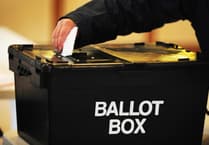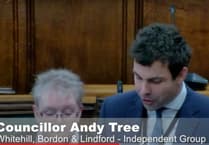There’s almost an ‘end-of-term’ atmosphere at East Hampshire councillors’ meetings at the moment – writes Steve Hunt, leader of the council's Lib Dem opposition – with many councillors asking each other: ‘Are you standing for election in May?’
I can answer that one right away – yes. That’s because I feel that I, and the Lib Dem Group, have managed have a positive influence at East Hampshire District Council (EHDC) since the last full election.
There was quite a steep learning curve for all the political groups as the people of the district voted in a sizeable group of opposition councillors in 2019, having previously been totally Conservative, and after a by-election, there was but one independent.
So East Hants’ Tory group had to adjust from ‘being its own opposition’ to allowing the new councillors to play their roles.
As a group we first tried to get more information, which was not straightforward, and because there are rules on policy making. Learning how the council functioned was a challenge.
Nevertheless, we made an early impact when the Lib Dems proposed a motion to declare a climate emergency.
There was a big commotion as the motion was watered down and amended with five minutes’ notice before the council meeting.
After much debate, East Hampshire did declare a climate emergency, and that has shaped the direction of the council since.
It’s been a bit like turning an oil tanker around, but now EHDC has a ‘Green Team’ of officers working to implement climate and environment measures into all policies.
Then there was the (non) merger with Havant. EHDC had already travelled a fair way down the road to a full staff merger, and the Lib Dems argued strongly it was the wrong direction.
We pointed to conflicts of interest and differing priorities between EHDC and Havant Borough Council. The needs of the communities are different.
This was finally accepted and the separation of services, enabling each council to staff and resource their own priorities, is under way.
Recently the Lib Dems proposed a motion for East Hampshire to increase its help for residents struggling with the cost of living.
Through a large amount of information gathering and cross-party co-operation, East Hampshire was able to agree new measures to help those most in need:
One important factor is that two per cent of any council tax increase will be ring-fenced for welfare.
There is also a significant extension of the Council Tax Relief Scheme, helping an estimated 600 more residents. The scheme will be reviewed annually to maximise the impact within our means.
As councillors, we have more flexibility of spending our councillor-allocated grants.
Finally, but importantly, East Hampshire will increase publicity to raise awareness of the help available to those finding it hard to pay their bills.
We’ve asked for a mobile ‘cost-of-living’ bus to be considered to bring greater access to advice in towns and villages.
EHDC councillors are now set to look at the final big decision before rules kick in about electioneering.
With the EHDC budget, I anticipate helpful discussions as we look towards 2023 to deliver the best for East Hampshire residents.
Meanwhile the making of the East Hampshire Local Plan continues, but that’s a decision for the next council.
We note that co-operation between planning authorities is being encouraged in special circumstances and our hope is for cross-border working with the South Downs National Park as we move forward.





Comments
This article has no comments yet. Be the first to leave a comment.